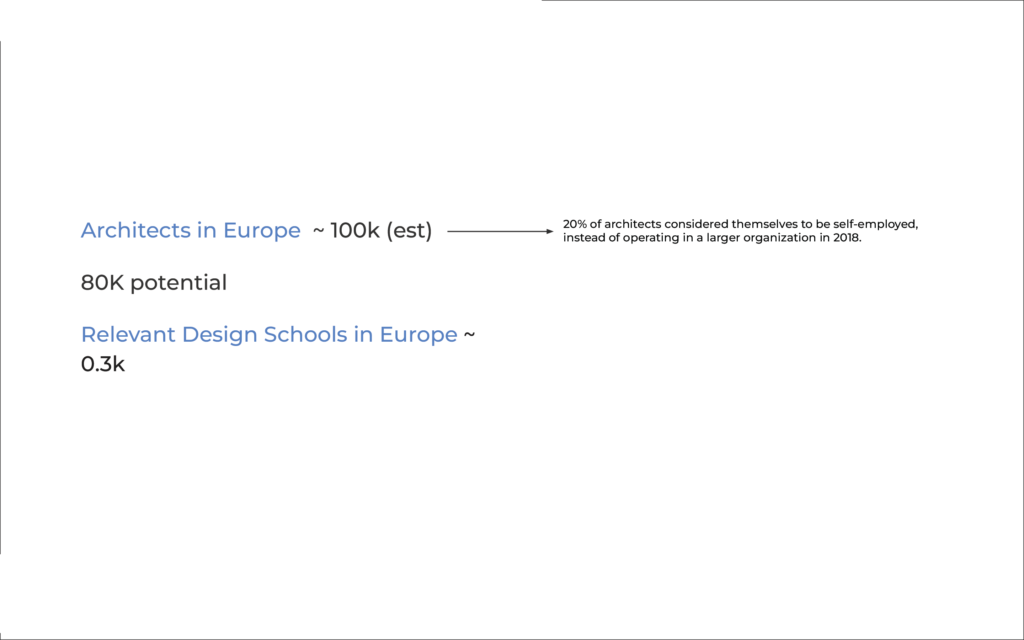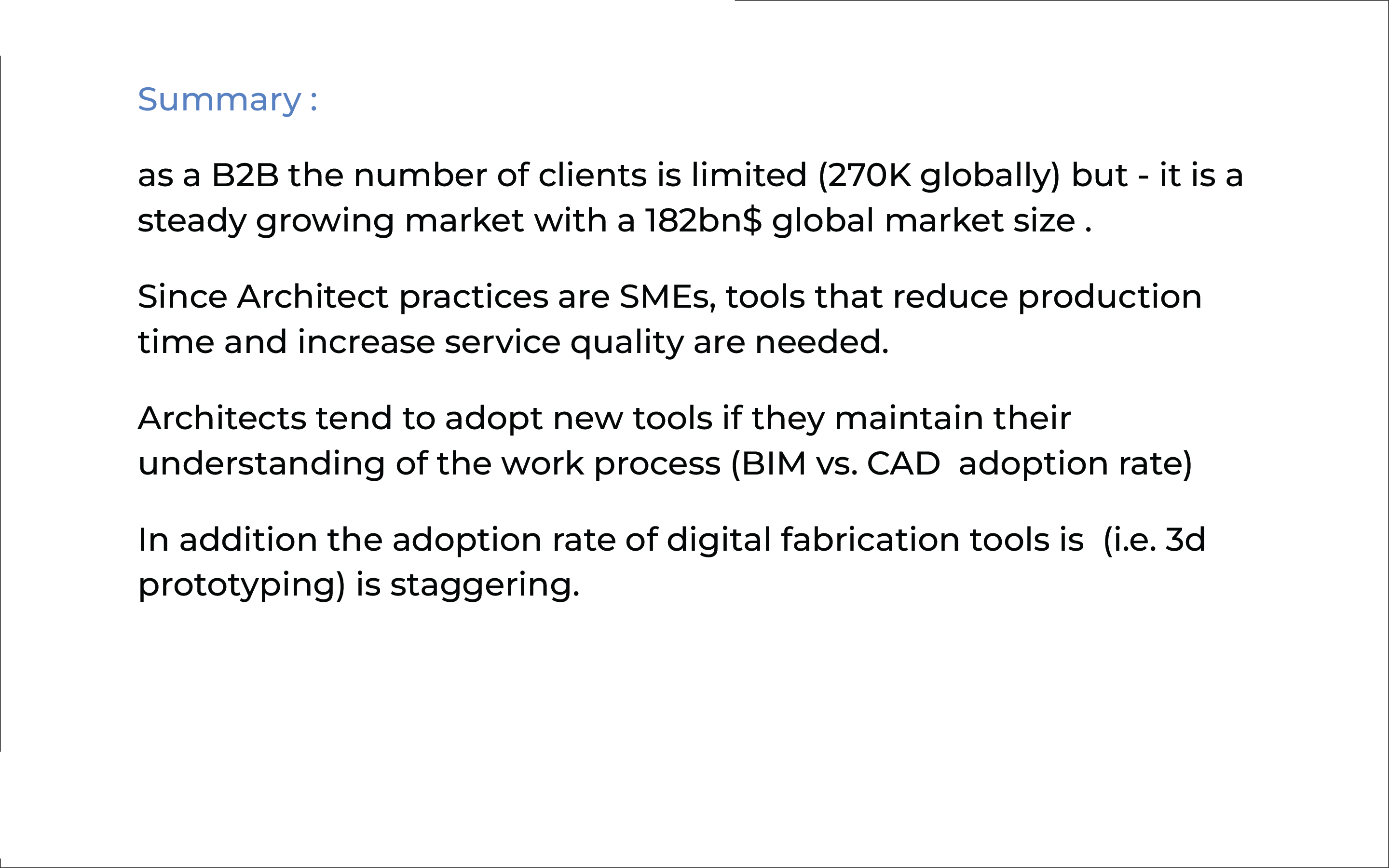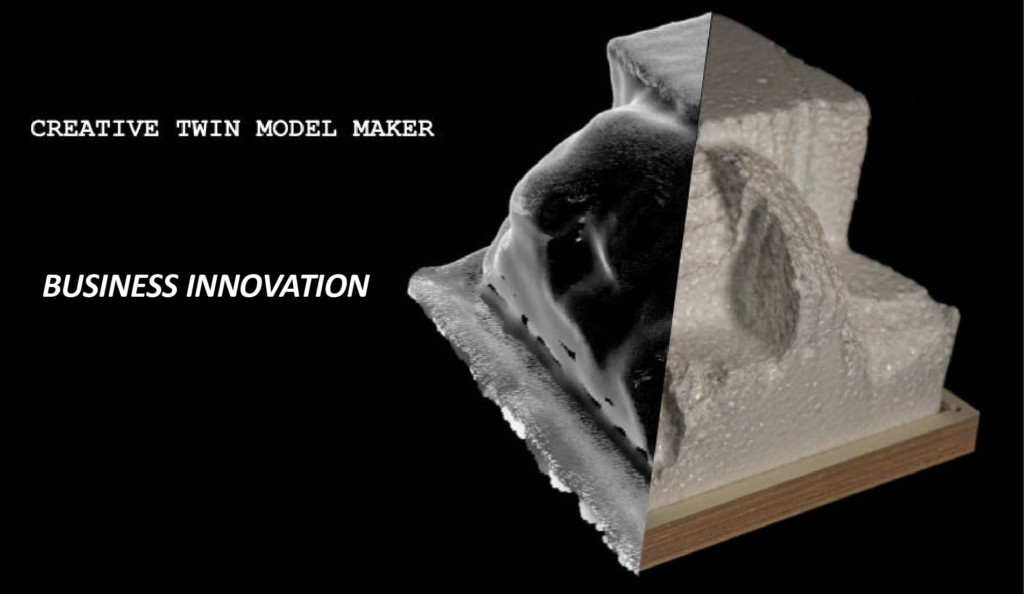
This Project Proposes an integrated Translator between physical to digital models to support The Creative Practices of Physical model making in the architectural practice
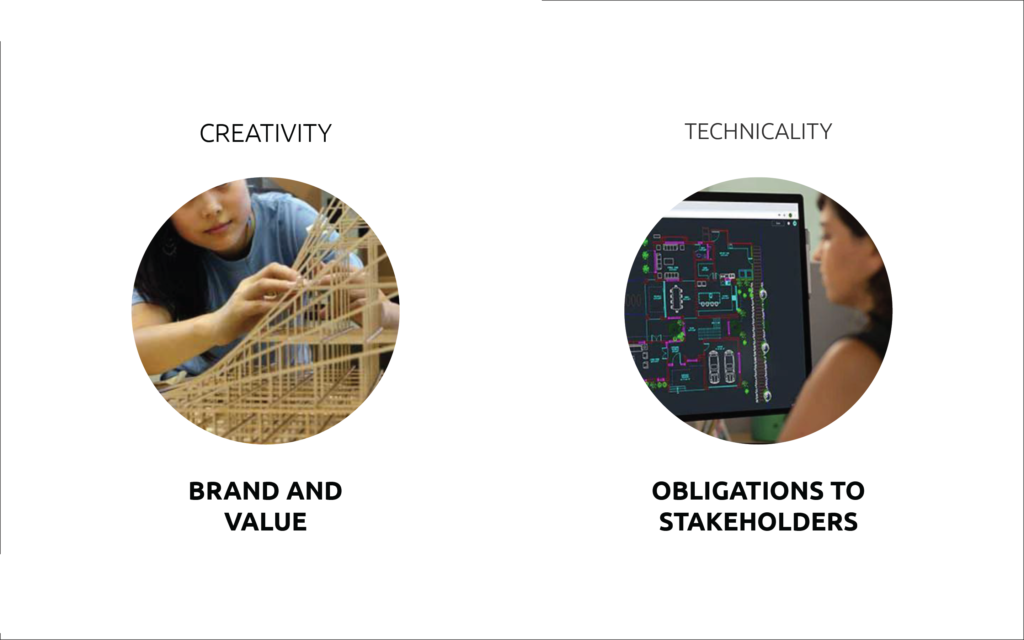
The architecture’s firm responsibilities can be divided into two main categories: The creative – where the architects create their business value and unique brand. And the technical – where they fulfill their obligations to stakeholders other than the client, such as external advisors, etc.
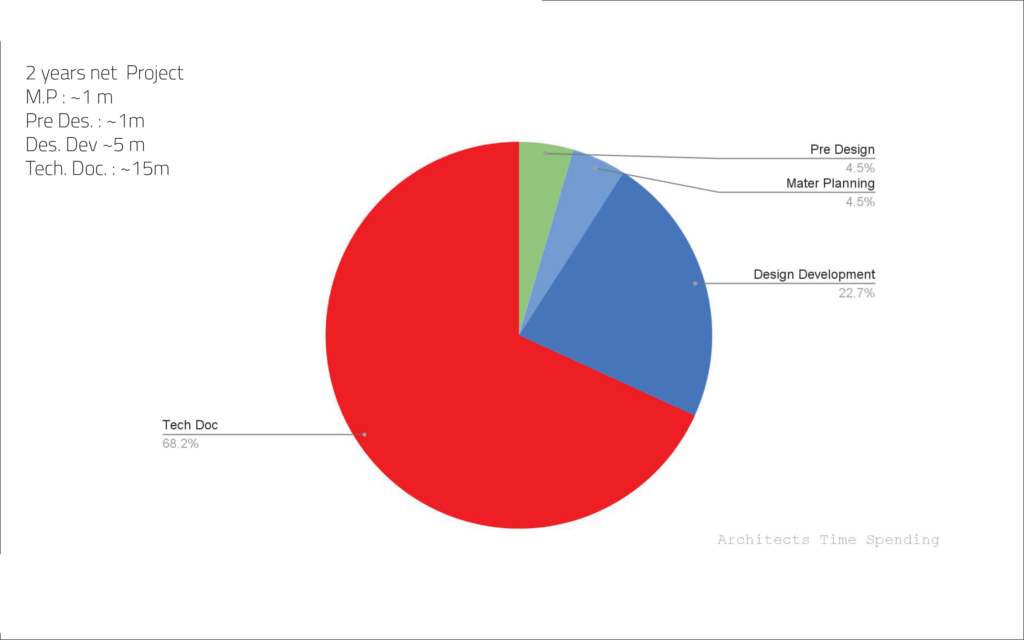
An overview examination reveals that the amount of time spent on design processes is significantly smaller than the time spent on supportive processes.
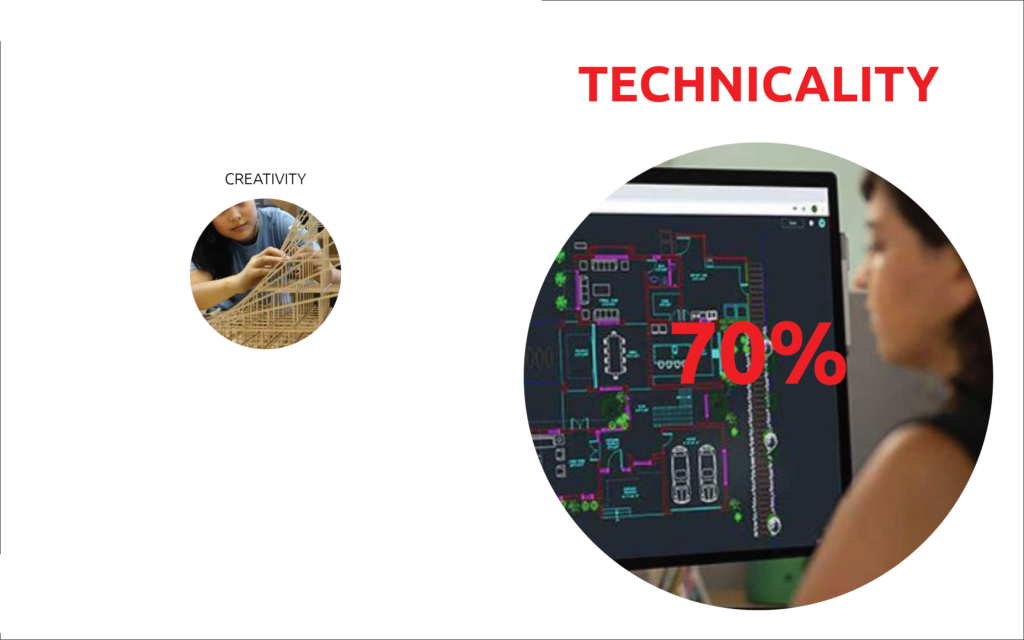
Evidently, Architects spend the majority of their time resources on providing services that do not correspond to their core value.
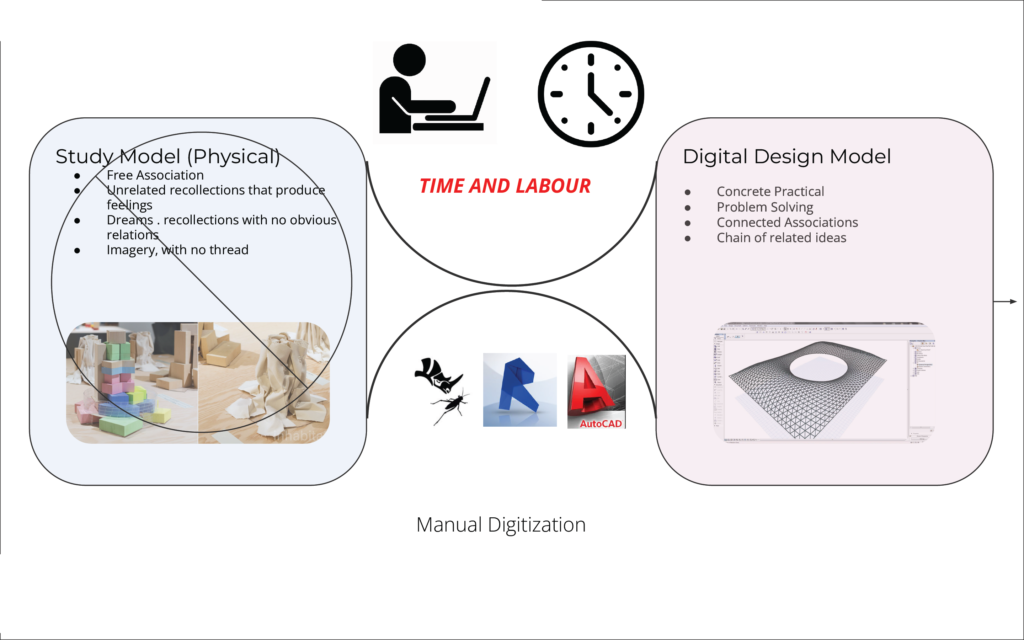
Due to the different workflows and platforms used for the creative and the technical deliverables, a vast amount of time is spent on the Translation between the various design tools. This causes many quality design tools to be deprecated, not because of lack of value but due to the translation cost to more technical-oriented platforms. The dept to external stakeholders reduces the value architects deliver to the project.
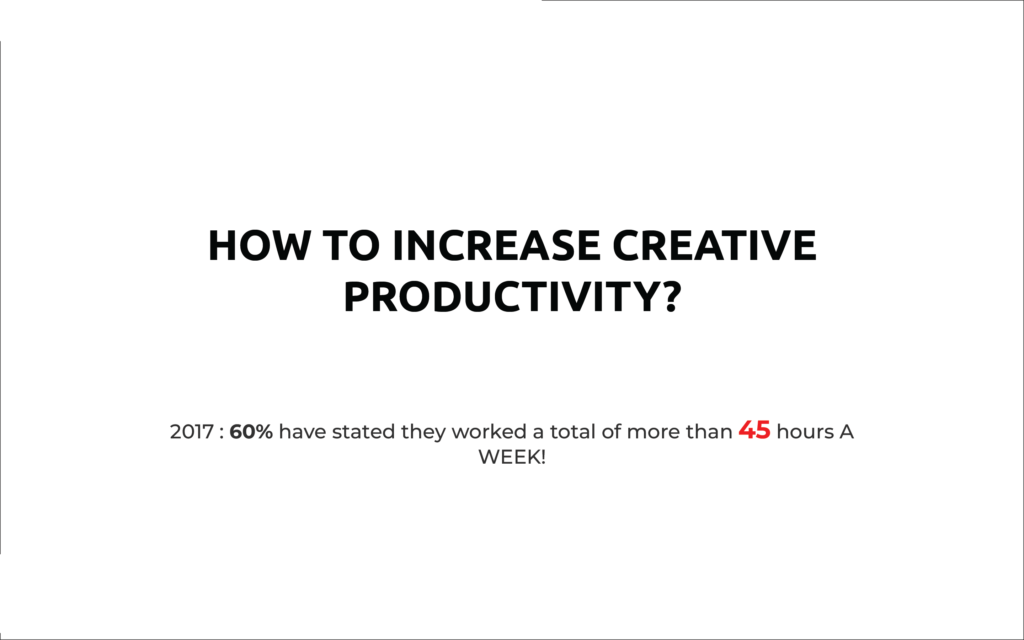
Looking at the architect’s work habits, We know the quality of their design is a significant and internal motivation. We can see that by unique phenomena such as architectural competitions, where the execution or even compensation is inherently not guaranteed, Or the abundance of overtime architects are willing to work compared to the standard working week.
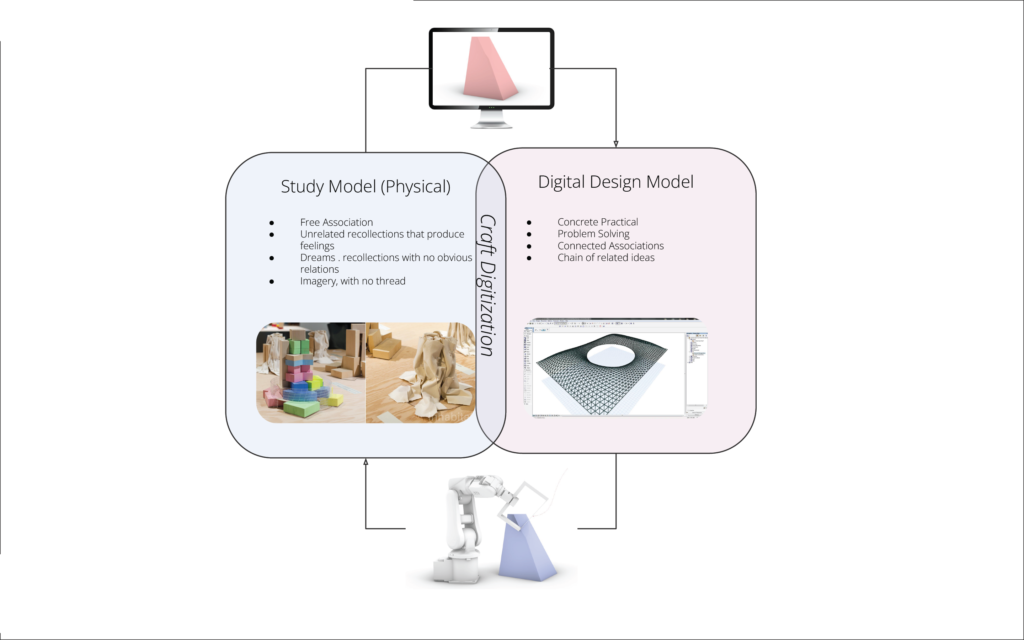
By introducing a unified system that automates the digital reconstruction and the physical fabrication, The designer could fluently transition between intuitive craft and the precision of CAD/BIM platforms with a minimal time overhead. The switch between traditional design tools in a Digital environment can be easy, fast, and without additional labor.
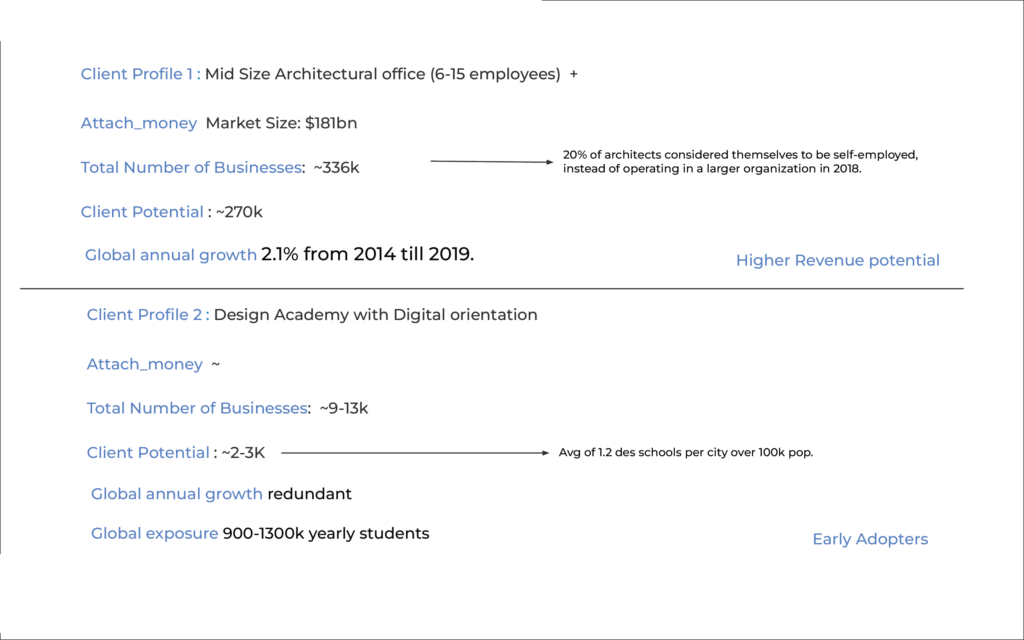
The two most prominent sectors that would be prone to use this system are Mid-range architects – who struggle with the cost-effectiveness of their project but could still afford to make the minimal investment to acquire the platform. In addition, design academies, albeit smaller in scale, could be excellent early adopters due to their funding model and tendency to push for recent technological trends. The company could continue developing and adjusting the features according to the experience gained with the academies while inserting a knowledgeable workforce into the industry.
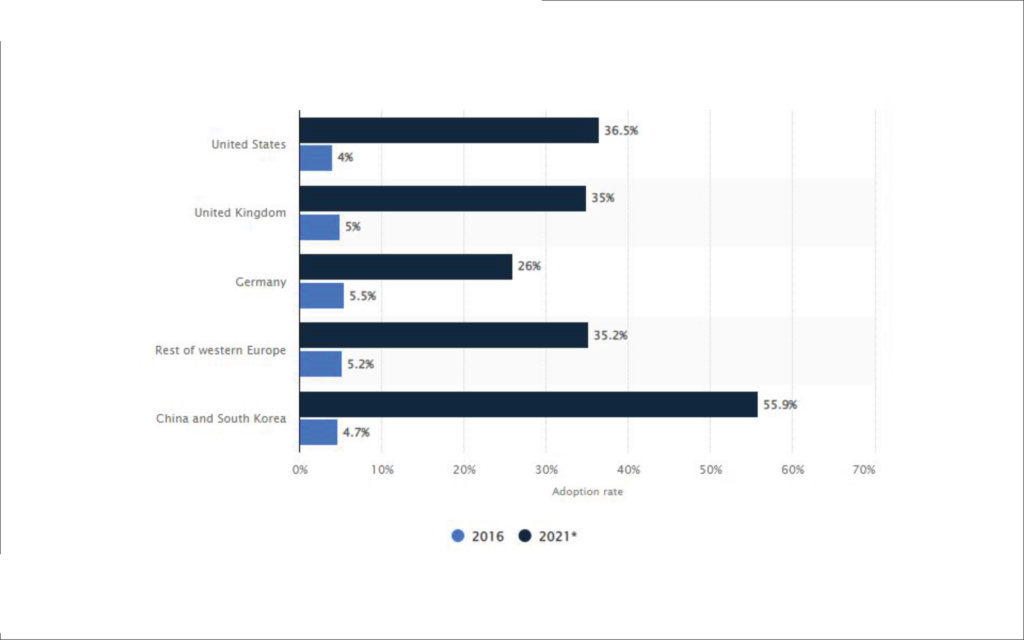
Examining the adoption rate of desktop 3D prototyping, we see that the design market is willing to invest in technological tools if they correspond with their natural conception that – physical representation is superior to digital.
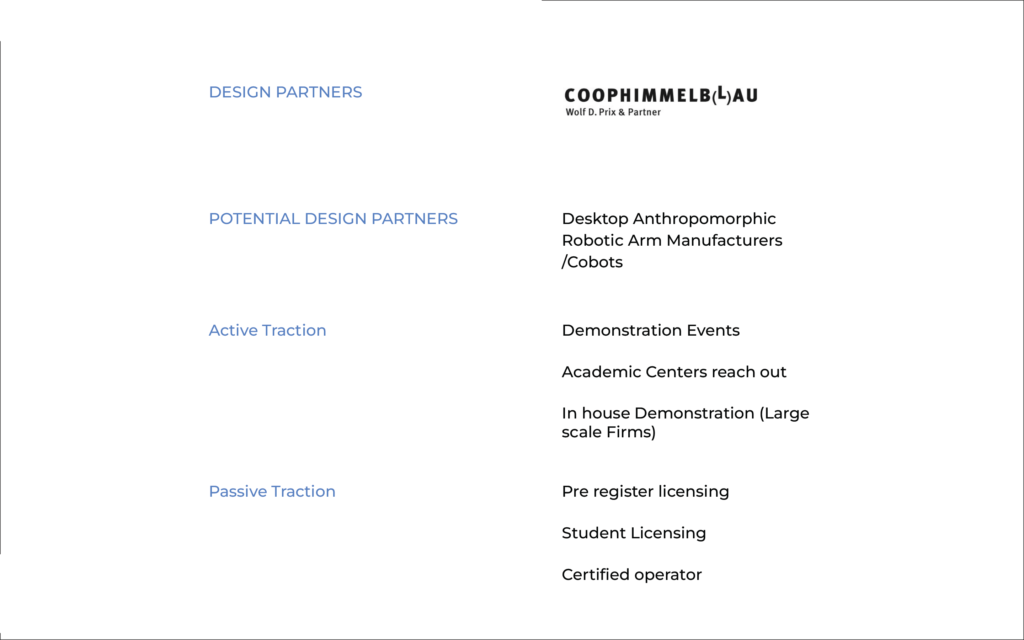
Looking at the project’s ecosystem, we can start mapping existing and natural partners and approaches we can use to create traction and gain client experience.
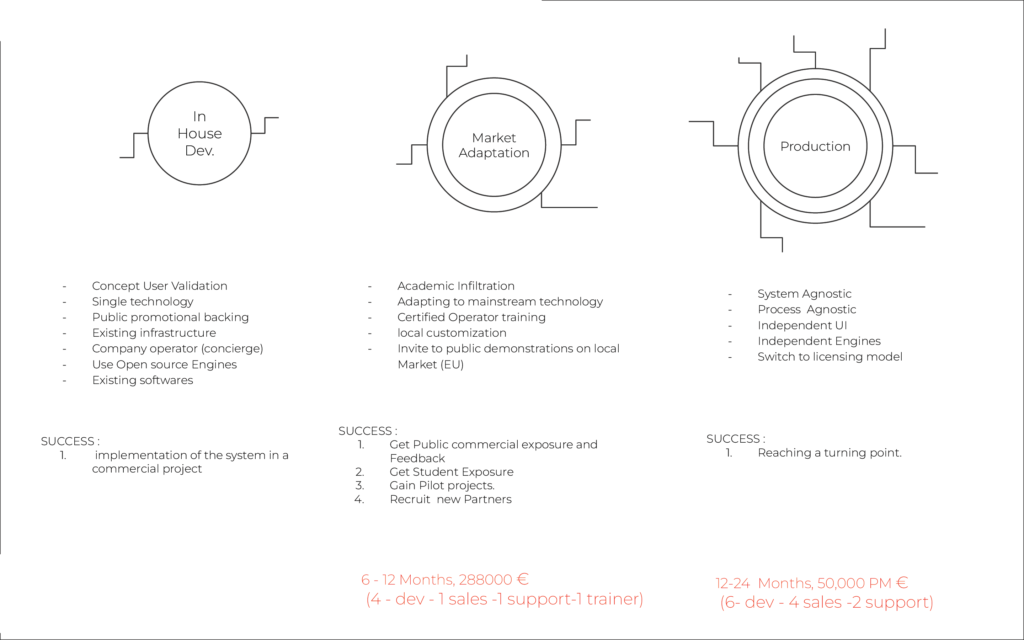
Due to the traditional approach of the architectural industry, we know that architects tend to incorporate new tech once they see it operating on either their competition or on more prominent brands. For that reason, the first stage is an in-house development at a familiar brand that gave his endorsement. The latter stages are derived from reading the architectural market as a slow transitioning market with a wide variety of particular workflow, striving to get more user experience to reach the third stage of more adaptive systems in materiality and various design platforms.
